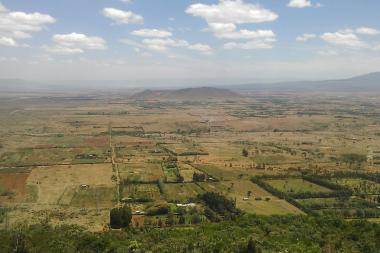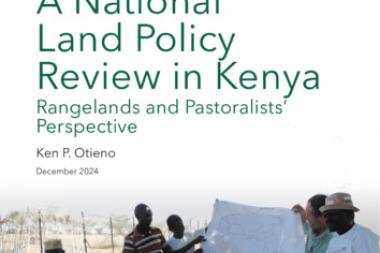Blog
Transforming land policy for Kenya's pastoralists: an opportunity for sustainable development in drylands
New SPARC evidence can support Kenya to implement policy that recognises the crucial role pastoralists play in the country’s journey towards sustainable development.
Publisher SPARC
Kenya’s National Land Policy (NLP) is undergoing a review. The process provides the government with an opportunity to officially recognise the importance of pastoralism in the country’s journey towards sustainable development. But getting to this point has taken more than 15 years.
Land reforms in Kenya came to a pivotal point in 2009 when the country enacted the NLP. It ushered in a new dawn for the country’s people. The policy, which lapsed in 2018, was expected to be reviewed after 10 years. The Constitution requires the National Land Commission (NLC) recommends a land policy for action to the government through the Ministry of Lands, Public Works, Housing and Urban Development. This process started in 2023 when the government established a National Steering Committee, Coordination Committee and Thematic Working Groups to spearhead the review.
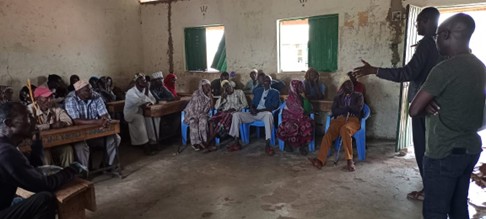
Priority themes that directly impact pastoralists
Through an audit of the review, the NLC and the Coordination Committee identified new priority themes for the proposed policy that directly impact pastoralists and rangelands. These themes include Surveying, Mapping and geo-referencing, Land for agriculture and food security, Land for investment, Housing infrastructure and land disputes and Conflict prevention and resolution. In a welcome step, pastoralists and others - including women and young people - have been given the chance to contribute to the audit and any recommendations the NLC puts forward.
The inclusion of these themes and pastoralists’ voices marks a shift in policy and is a significant move towards recognising the value of pastoralism. It paves the way for the country to secure, protect and register pastoralists’ rights and claims.
If adopted, pastoral lands will - for the first time - have greater legal protection than they currently do. The existing policy states that pastoral land requires ‘special attention’, in keeping with land rights for other groups, including those for minorities and marginalised groups, such as women.
But much depends on how the review process handles the participation of pastoralists and how much emphasis is given to the themes.
Dr. Hassan Guyo Roba, Director of Kenya Strategy at The Christensen Fund, said: “Pastoralist fights over resources is not about scarcity but abundance. That’s why the policy must provide a framework for proper use and management of the abundant resources.”
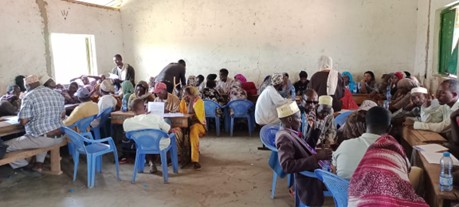
The NLP review also identified several critical areas that need attention to ensure that pastoral communities are adequately represented and protected. These include Land use planning, Land administration, Survey mapping and Georeferencing, Land tenure, Natural resources, Environment and conservation, Conflict resolution, Land for agriculture and food Security; Land for investment, housing and infrastructure; National land information and Management systems.
Key steps to reform land policy
To help policymakers integrate the experiences of pastoralists and the themes into the review, SPARC has provided them with a set of policy actions that align with these critical areas. These key recommendations, set out in more detail in our new policy brief ‘Rethinking land policy for Kenya’s pastoral communities' , will help to integrate pastoralists' perspectives into the national discourse and ensure the land policy review addresses the needs of dryland communities. The recommendations are:
- Codification of indigenous practices: Integrating indigenous land use practices into the formal planning framework will help to protect pastoral lands and ensure their sustainable use.
- Strengthening community governance: Enhancing the capacity of Community Land Management Committees will empower local communities to manage their lands effectively, blending traditional knowledge with modern governance practices.
- Technological integration: The use of geographical information systems and other technologies should be promoted to improve the management and protection of pastoral lands.
- Recognition of collective rights: The policy must provide clear guidelines for recognising and protecting collective land rights, ensuring that pastoralists' access to land and resources is secure.
- Participatory land use planning: Engaging pastoral communities in the planning process ensures that their needs and practices are understood and respected. Participatory Rangeland Management (PRM) and other inclusive planning methods can help to create policies that are effective and supported by the communities they affect.
Food production, and the conservation of biodiversity and ecosystems
Critically, pastoralism is more than just a livelihood. It is a dynamic system of managing land and natural resources that has sustained communities in Kenya and the world for generations. However, pastoralism involves challenges and opportunities that extend far beyond moving livestock across large landscapes. Pastoralists' land remains tenure insecure due to the lack of full recognition of the system.
Beyond pastoralism, food production, biodiversity conservation and the maintenance of ecosystems are also challenges. Despite its significance, pastoralism has been poorly understood in national policy processes. This has led to weak land and resource tenure, resource conflicts, and land degradation.
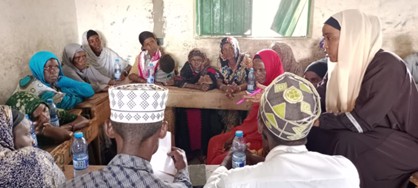
Building a future where pastoral communities thrive
The ongoing review of Kenya's NLP is more than a legislative necessity. It provides policymakers with an opportunity to address long-standing inequities and build a future where pastoral communities can thrive. By recognising pastoralists' unique challenges and contributions, the revised policy can lay the groundwork for sustainable development in Kenya's rangelands.
As the review continues, the voices of those who live and depend on these lands are central to the decision-making process and must be heard. This is not just about land but about people, livelihoods, the future of Kenya's arid and semi-arid lands and its journey towards sustainable development. Whether the new policy is effective will be measured by its ability to secure the land rights of pastoralists, ensuring that their way of life is protected and that their contributions to the nation's economy and culture are fully recognised.
Read this related report ‘A National Land Policy Review in Kenya: Rangelands and Pastoralists’ perspective’.
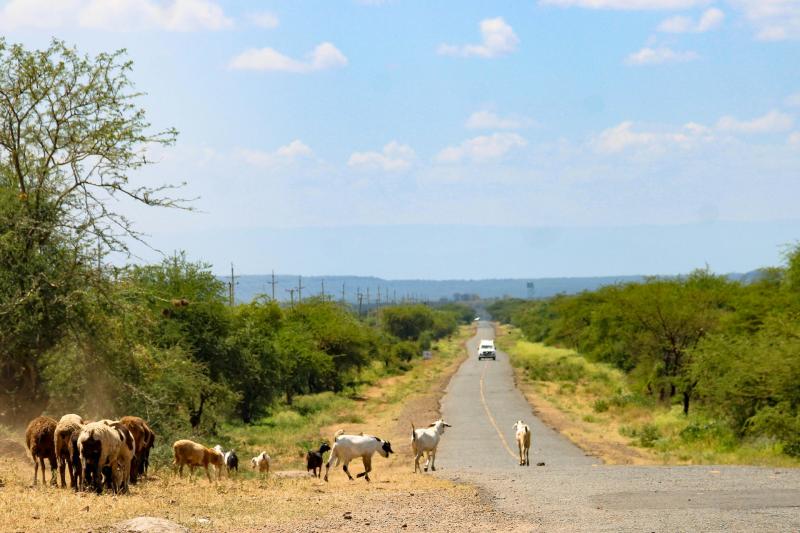
Goats wonder by the road in the Great Rift Valley, Illeret, Kenya
Credit Photo by Sweder Breet on Unsplash
